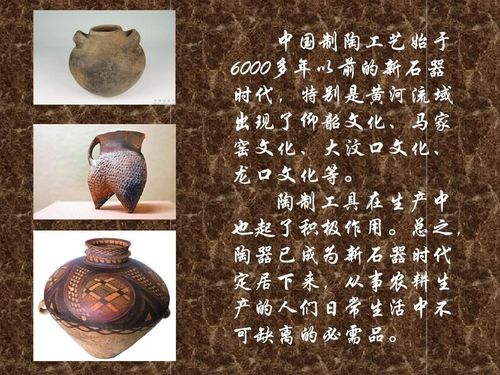
The Enduring Significance of Ceramics in China
Ceramics in China have had a profound and enduring cultural impact, not only within the country but also across the globe. From ancient burial urns to exquisite tea ceremony vessels, Chinese ceramics have served practical, aesthetic, and spiritual purposes for millennia. Their influence can be seen in art, religion, trade, and daily life.
Ceramics in Ritual and Religion
Throughout Chinese history, ceramics have played a significant role in rituals and religious practices.
-
Burial Urns: In ancient China, elaborately decorated ceramic vessels were used as burial urns. These urns, often adorned with intricate patterns and symbolic figures, reflect the belief in an afterlife and the importance of honoring the deceased. The famous Terracotta Army of Emperor Qin Shi Huang is a testament to the scale and artistry of funerary ceramics.
-
Ancestor Veneration: Ceramics have long been used in ancestor veneration ceremonies. Incense burners, offering dishes, and ritual wine vessels, crafted from porcelain or earthenware, serve as tangible connections to ancestors and embody respect for familial lineage.
-
Buddhist Influence: The arrival of Buddhism in China brought with it new forms of ceramic art. Delicate celadon-glazed incense burners and statues of Buddhist deities became highly prized. The serene beauty of these pieces reflected the contemplative nature of Buddhist teachings.
Ceramics in Daily Life
Beyond ritual use, ceramics were essential to daily life in China.
-
Domestic Wares: From the Neolithic period onwards, simple earthenware pots were used for cooking, storing food, and carrying water. Over time, these everyday objects became increasingly refined, demonstrating both practicality and artistry.
-
Tea Culture: The rise of tea drinking in China led to the development of specialized ceramic wares. Teapots, cups, and bowls were crafted with meticulous care, their glazes and shapes designed to enhance the aroma and flavor of different teas.
-
Decorative Arts: Chinese ceramics transcended their utilitarian functions to become highly prized decorative objects. Vases adorned with intricate paintings of landscapes, flowers, and mythological scenes graced the homes of the elite and served as symbols of wealth and refinement.
The Global Impact of Chinese Ceramics
The influence of Chinese ceramics extends far beyond its borders.
-
The Silk Road: Through the Silk Road, Chinese porcelain and pottery reached the Middle East, Europe, and Africa. The exquisite craftsmanship and exotic designs captivated foreign audiences, and Chinese ceramics became highly sought-after luxury goods.
-
Technological Exchange: The quest for Chinese-style ceramics spurred technological innovation in other cultures. Potters in Korea, Japan, and Persia developed their own distinctive styles and techniques, often inspired by Chinese precedents.
-
Continuing Legacy: Today, Chinese ceramics continue to be admired and collected worldwide. Ancient masterpieces are displayed in museums, while contemporary ceramic artists continue to push the boundaries of the art form, ensuring that the legacy of Chinese ceramics remains vibrant and influential.
Questions for Further Exploration
- How did the techniques used to create Chinese ceramics evolve over time?
- What are some of the key regional styles of Chinese ceramics, and what distinguishes them?
- In what ways do contemporary Chinese ceramic artists draw inspiration from traditional forms and techniques?
note: This return of all, without the author's permission, may not be reproduced